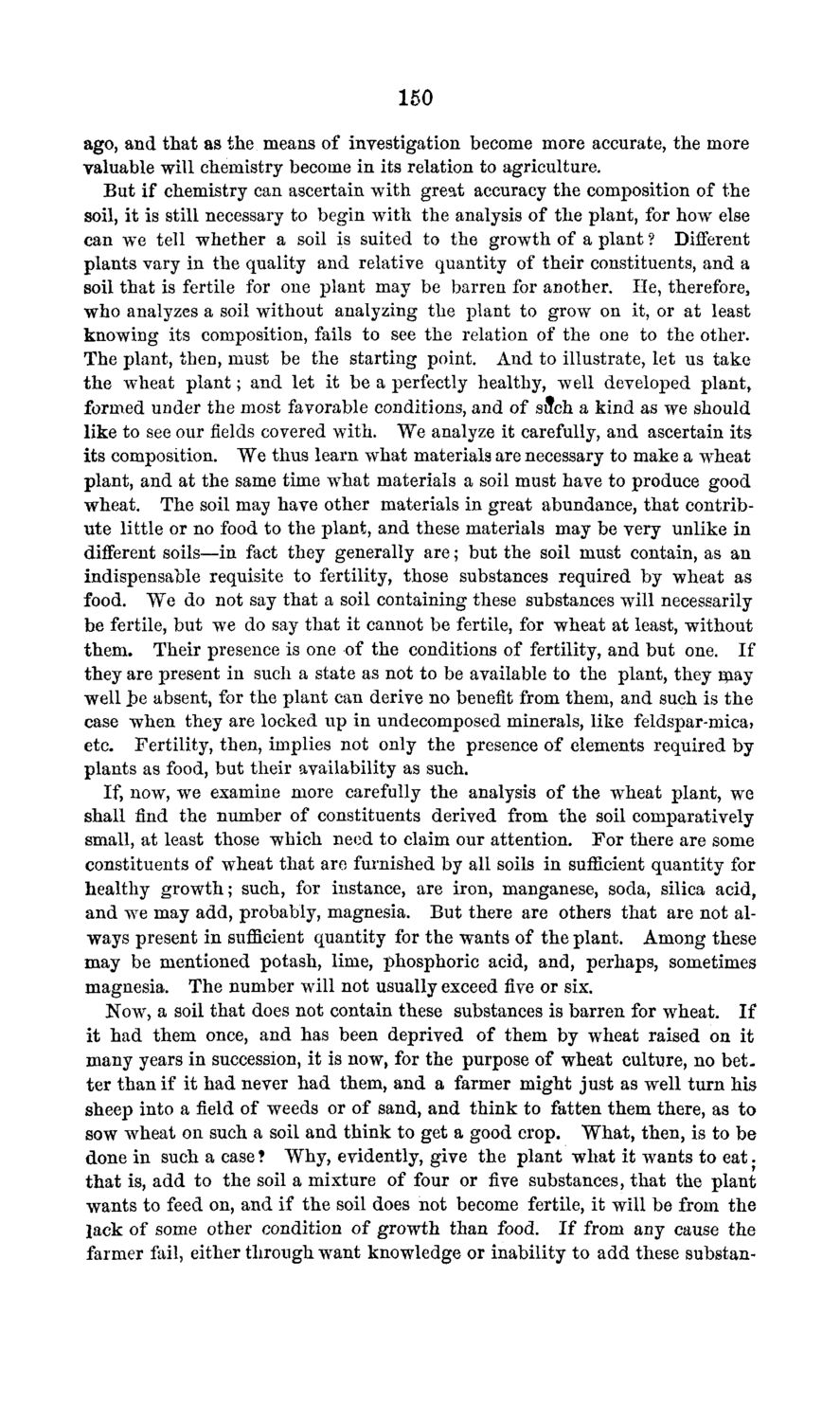| |
| |
Caption: Board of Trustees Minutes - 1869
This is a reduced-resolution page image for fast online browsing.

EXTRACTED TEXT FROM PAGE:
150 ago, and that as the means of investigation become more accurate, the more valuable will chemistry become in its relation to agriculture. But if chemistry can ascertain with great accuracy the composition of the soil, it is still necessary to begin with the analysis of the plant, for how else can we tell whether a soil is suited to the growth of a plant ? Different plants vary in the quality and relative quantity of their constituents, and a soil that is fertile for one plant may be barren for another. He, therefore, who analyzes a soil without analyzing the plant to grow on it, or at least knowing its composition, fails to see the relation of the one to the other. The plant, then, must be the starting point. And to illustrate, let us take the wheat plant; and let it be a perfectly healthy, well developed plant, formed under the most favorable conditions, and of sffch a kind as we should like to see our fields covered with. We analyze it carefully, and ascertain its its composition. We thus learn what materials are necessary to make a wheat plant, and at the same time what materials a soil must have to produce good wheat. The soil may have other materials in great abundance, that contribute little or no food to the plant, and these materials may be very unlike in different soils—in fact they generally are; but the soil must contain, as an indispensable requisite to fertility, those substances required by wheat as food. We do not say that a soil containing these substances will necessarily be fertile, but we do say that it cannot be fertile, for wheat at least, without them. Their presence is one of the conditions of fertility, and but one. If they are present in such a state as not to be available to the plant, they may well i>e absent, for the plant can derive no benefit from them, and such is the case when they are locked up in undecomposed minerals, like feldspar-mica> etc. Fertility, then, implies not only the presence of elements required by plants as food, but their availability as such. If, now, we examine more carefully the analysis of the wheat plant, we shall find the number of constituents derived from the soil comparatively small, at least those which need to claim our attention. For there are some constituents of wheat that are furnished by all soils in sufficient quantity for healthy growth; such, for instance, are iron, manganese, soda, silica acid, and we may add, probably, magnesia. But there are others that are not always present in sufficient quantity for the wants of the plant. Among these may be mentioned potash, lime, phosphoric acid, and, perhaps, sometimes magnesia. The number will not usually exceed five or six. Now, a soil that does not contain these substances is barren for wheat. If it had them once, and has been deprived of them by wheat raised on it many years in succession, it is now, for the purpose of wheat culture, no better than if it had never had them, and a farmer might just as well turn his sheep into a field of weeds or of sand, and think to fatten them there, as to sow wheat on such a soil and think to get a good crop. What, then, is to be done in such a case ? Why, evidently, give the plant what it wants to eat. that is, add to the soil a mixture of four or five substances, that the plant wants to feed on, and if the soil does not become fertile, it will be from the lack of some other condition of growth than food. If from any cause the farmer fail, either through want knowledge or inability to add these substan-
| |